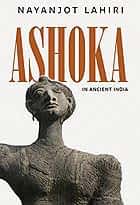 In contemporary quotidian life, communications can reach far corners of the globalised world within an instant. As we just about begin to make sense of this bewildering reality, Nayanjot Lahiri brings us to ponder upon messages from beyond the last two millennia. Ashoka in Ancient India brings a voice of the past with rare acuity, its messages conveyed within multiple narratives of archaeology, religion, languages and political ideology, all held taut through the central theme of the life and times of the Mauryan emperor, Ashoka.
In contemporary quotidian life, communications can reach far corners of the globalised world within an instant. As we just about begin to make sense of this bewildering reality, Nayanjot Lahiri brings us to ponder upon messages from beyond the last two millennia. Ashoka in Ancient India brings a voice of the past with rare acuity, its messages conveyed within multiple narratives of archaeology, religion, languages and political ideology, all held taut through the central theme of the life and times of the Mauryan emperor, Ashoka.
Initiating a welcome new genre of books in what could be best described as an archaeological biography, this book is a worthy successor, albeit in the textual form, of the British Museum’s pioneering exhibition on the Roman emperor Hadrian (AD 117 to 138). While Hadrian was known for his architecture, Ashoka (‘the sorrowless one’) is better known for his edicts carved on stone—strewn across the subcontinent from Afghanistan to Orissa and as far south as Karnataka. Whereas the exhibition brought material culture from Hadrian’s time to us, this book brings together the multiple narratives that make up Ashoka’s life. Click here to read more
